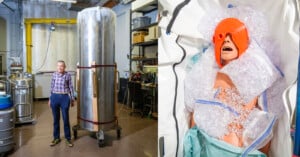
Photographer Visits Creepy Cryogenic Chamber Where 200 Bodies Are Stored
A photographer was given special access to a cryogenics facility in Scottsdale, Arizona that preserves over 200 human bodies and heads.

A photographer was given special access to a cryogenics facility in Scottsdale, Arizona that preserves over 200 human bodies and heads.

The new startup Inalife wants to make a digital family album for many generations.
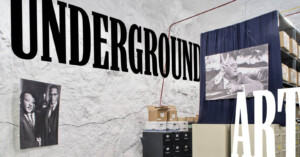
Around 50 miles (82 kilometers) north of Pittsburgh, Pennsylvania, and 220 feet (67 meters) underground, there are roughly 11 million images protected by armed guards.

Brazilian photographer Sebastião Salgado is widely regarded as one of the great photographers on the planet today. He has traveled to over 120 countries, capturing powerful social documentary images that have appeared in exhibitions and publications around the globe.
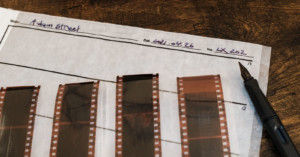
In the past few weeks, I’ve received a lot of requests to share my process for organizing and archiving negatives, and the timing was perfect because a big batch just arrived from my friends at Carmencita Film Lab. Look at this sweet sight of fresh negatives!

All digital data storage decays in one way or another. Depending on if your storage media, your digital photos may last just years or decades before "bit rot" destroys it. But Microsoft is working on something called Project Silica that could one day allow you to store your precious memories safely for 10,000 years by etching the data into glass.

Beware: instant cameras that produce Zink photos may not be a good option for preserving memories long term.

Late last month, a man named Jeff H. was walking on a trail in Yellowstone National Park when he noticed a group of tourists ignoring warning signs and standing next to one of the famous hot springs for close-up photos. His video 4.5-minute video above showing himself scolding the tourists has since gone viral.
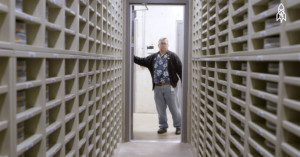
Here's a 3-minute video by Great Big Story about the National Audio-Visual Conservation Center in Culpeper, Virginia, a nuclear bunker that was once used by the Feds to house $4 billion worth of gold. Its goal these days is to preserve the nation's history of film.

Charles M. Conlon was an early 20th century American photographer who was among the first to regularly photograph baseball games and players. Although he shot many iconic early photos of the sport, his name was largely unknown until 1990, when 8,000+ of his negatives were found in the archives of Sporting News.
Many of the photos were heavily marked, and the Digital Archive Project at the National Baseball Hall of Fame has been working to restore those images for future generations.

Have you ever seen your parents' or grandparents' wedding photos? Chances are they were printed on photographic paper either as individual prints or presented in a wedding album. They're priceless family heirlooms and they'll likely outlast much of today's wedding photography.
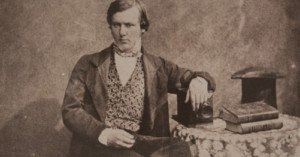
A British group working to preserve the work of influential 19th-century photographer William Henry Fox Talbot has discovered previously unseen work by the innovator.
A project led by Oxford University's Bodleian Libraries has been working to preserve the largest extant pivate collection of Talbot's work since family members revealed last year that they were working with a New York dealer who could sell key works to private collectors.
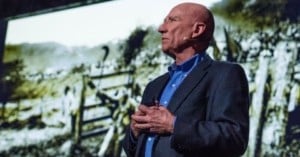
The photographic story of Sebastião Salgado doesn't begin when he was handed a camera as a child. It, like a few others we've shared, begins much later in life (after a PhD in economics) when photography, as Salgado puts it, "made a total invasion into [his] life."
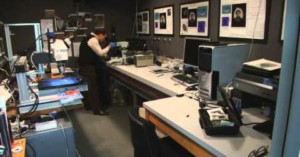
Eight years ago, it was discovered that some of the earliest daguerreotypes ever taken were fading away before our very eyes. Given the historical significance of these photographs, watching them deteriorate over time was unacceptable. So, in an attempt to save them, George Eastman House has enlisted the help of the University of Rochester.
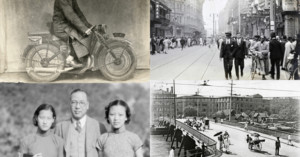
It's nearly impossible to find a photograph in China taken before 1970 -- most images were destroyed or removed to other countries during Mao Zedong's Cultural Revolution.
A professor at Bristol University in the UK is running a project in search of these lost images, the BBC reports:
Such photographs are exceptionally rare in China. The turbulent history of the 20th Century meant that many archives were destroyed by war, invasion and revolution. Mao Zedong's government regarded the past as a "black" time, to be erased in favour of the New China. The Cultural Revolution of the late 1960s finished the job.
"If you were at all savvy," says (Professor Robert) Bickers, "you realised early on that you had to destroy your own private family records, before the Red Guards came and found evidence of your bourgeois, counter-revolutionary past, when you might have drunk coffee in a café bar, à la mode."

Bill Gates’ image licensing company Corbis has collection of more than 100 million …